-
Page Navigation Links:
- Skip to Site Navigation Links
- Skip to Features

- The University of Iowa
- Spectator
- Monthly News for UI Alumni and Friends
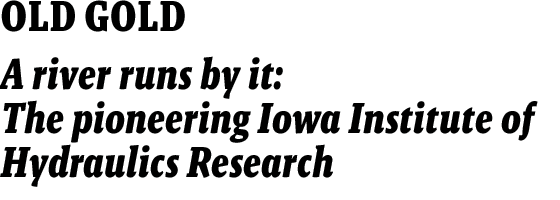
Earth, air, fire, and water—the four basic elements of our physical universe. We’ll bypass the periodic table of the elements here, since Old Gold couldn’t grasp its meaning in junior high science class. Talk about the basic four, though, and he is in his scientific comfort zone. The fact that The University of Iowa is home of the renowned Iowa Institute of Hydraulic Research makes that zone even more meaningful.
IIHR, one of the world’s foremost research centers on water and fluid mechanics, is a testament to the foresight of Floyd Nagler. The Michigan native and graduate of Michigan State College and the University of Michigan joined the UI College of Engineering faculty in 1920 as a professor of mechanics and hydraulics.
In his 13-year tenure he established a research center occupying the stately five-story structure that hugs the western bank of the Iowa River below the Burlington Street Bridge. The building, completed in 1927 and restored in recent years, is a familiar and historically significant landmark on Riverside Drive.
Since its inception, the institute—today officially known as IIHR-Hydroscience & Engineering—has collaborated with federal agencies including the Department of Agriculture, the Army Corps of Engineers, the Weather Bureau (now National Weather Service), and the U.S. Geological Survey. Areas of research at the institute have included ship hydrodynamics, hydrometeorology (the science of moisture in the sky), river diversion and control, and factors specific to settings most anywhere in the world.
Consider a 1990s proposal to build a causeway at Nome, Alaska, a coastal community facing the Bering Sea. A model of the causeway created at IIHR predicted the likelihood of ice floe blockage during the winter.
More recently, IIHR researchers have received National Science Foundation (NSF) and NASA grants totaling nearly $1.5 million. They include an NSF grant to Witold Krajewski, director of the Iowa Flood Center, which is helping researchers develop better ways to predict the course of floods, and a NASA grant to Thanos Papanicolaou and colleagues who are exploring the impact of intensified corn production on soil erosion.
To learn more about the fascinating history of this unique research center, check out Cornelia Mutel’s thorough and informative book Flowing Through Time: A History of the Iowa Institute of Hydraulic Research (Iowa City: Iowa Institute of Hydraulic Research, 1998).
—David McCartney, University Archivist
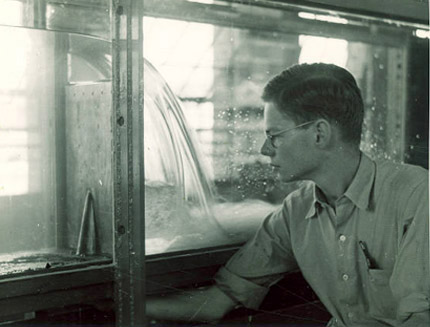 Examining water flow in the hydraulics laboratory, 1930s. Libraries
Examining water flow in the hydraulics laboratory, 1930s. Libraries
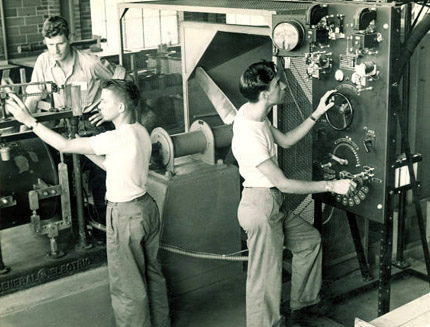 Adjusting levers and dials in the hydraulics laboratory, Aug. 15, 1948.Libraries
Adjusting levers and dials in the hydraulics laboratory, Aug. 15, 1948.Libraries
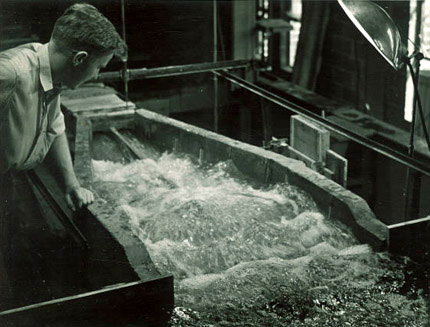 The hydraulics laboratory, 1950s
The hydraulics laboratory, 1950s
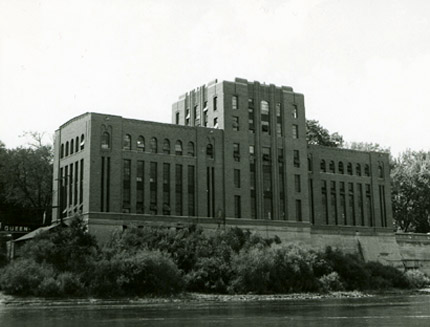 View of the IIHR building from the east, after 1932
View of the IIHR building from the east, after 1932
All of this month's images from the F.W. Kent Collection of Photographs (RG 30.01.01), Colleges and Departments series, "Hydraulics" folder, University Archives, Department of Special Collections, University of Iowa Libraries.
NEXT MONTH:
The University of Iowa and the Civil War: Remembrance at the sesquicentennial
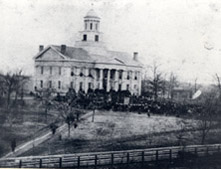
Memorial service for President Abraham Lincoln, 1865, at Old Capitol, looking northwest (Clinton Street along front).
Source—The Iowa Alumnus (v. 9, p. 31; November 1911), University Archives, Department of Special Collections, University of Iowa Libraries
If you’ve got memories to share, please send them to Spectator and we’ll run some next month.
Previous Old Gold editions:
© The University of Iowa 2009